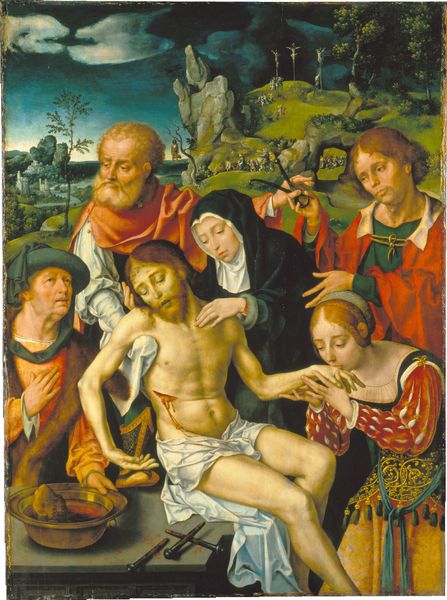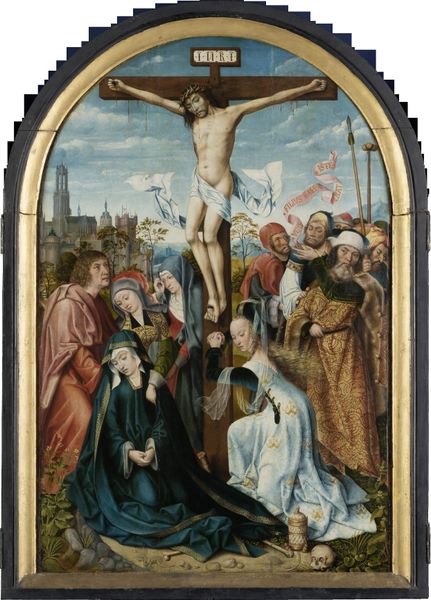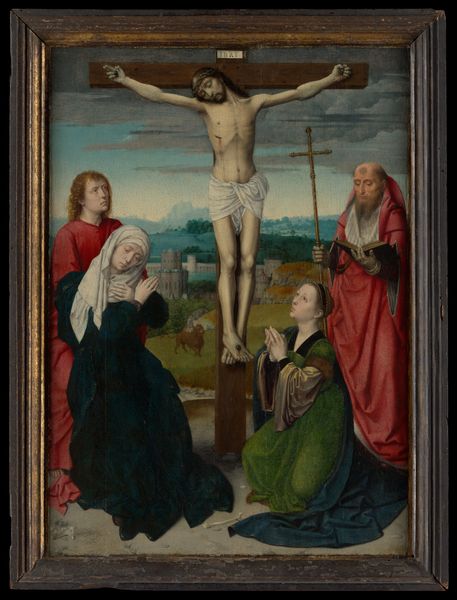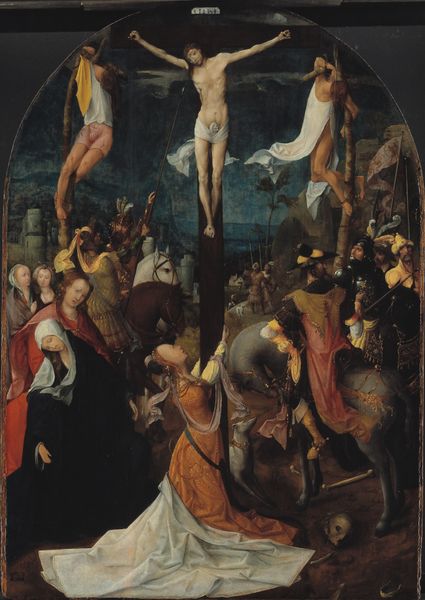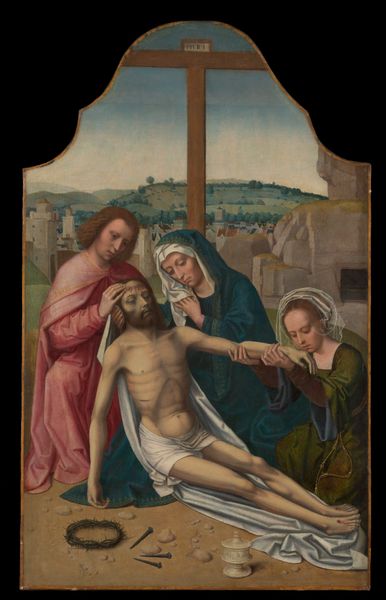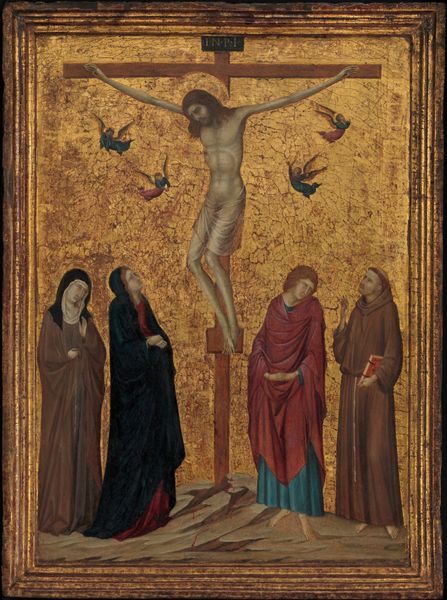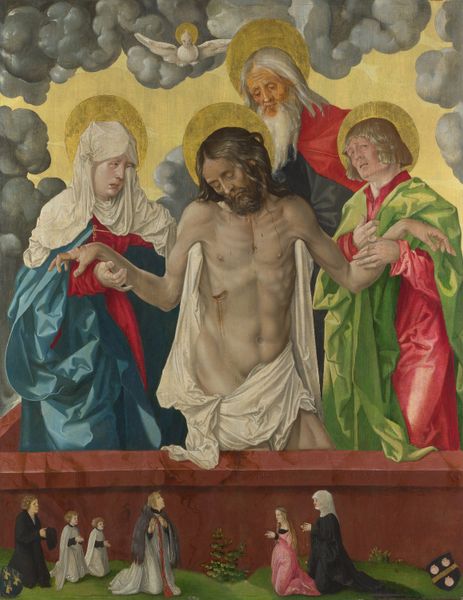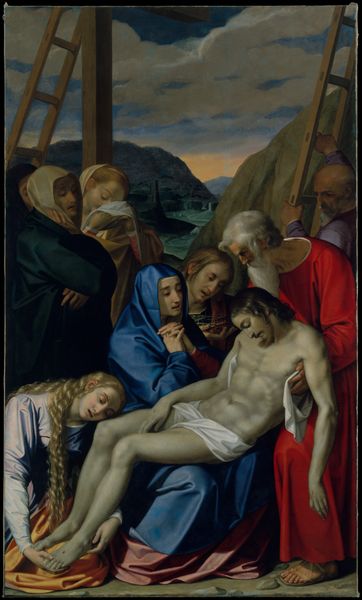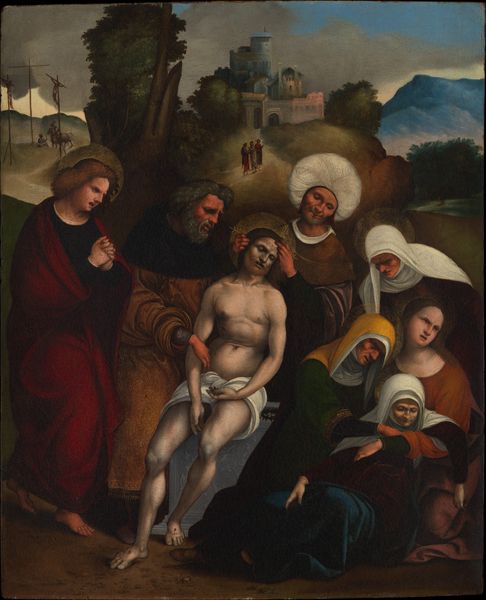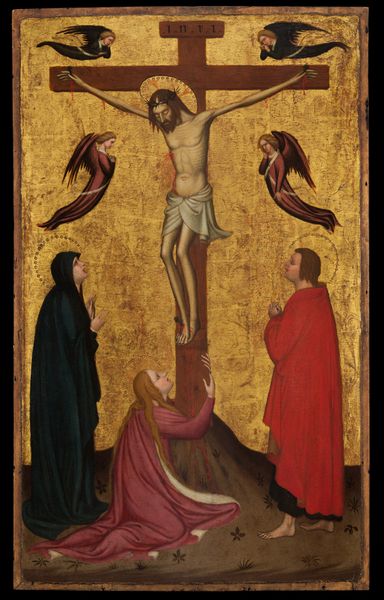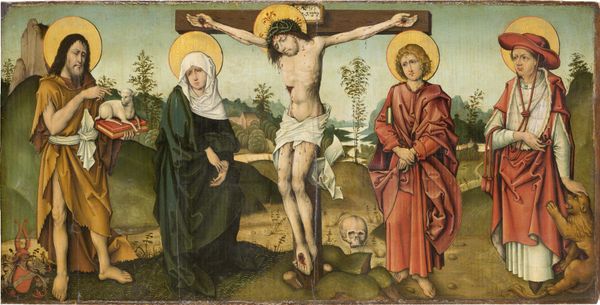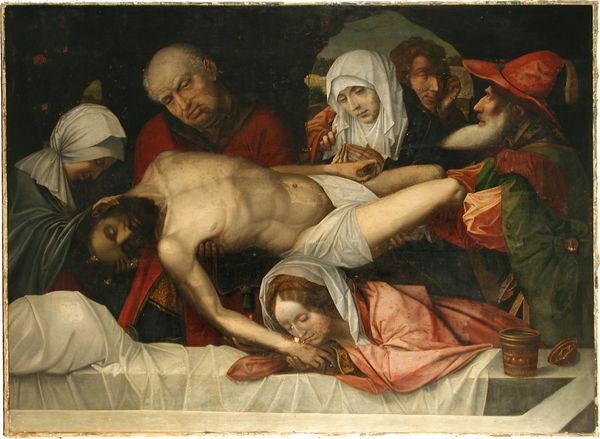
Dimensions: 46.0 x 29.4 x 1.1 cm
Copyright: Public Domain
Curator: Standing before us is a compelling oil painting on wood panel, “The Crucifixion of Christ,” created circa 1510 to 1520. It currently resides here at the Städel Museum. Editor: It’s powerfully somber. The dark palette, punctuated by the pale figures, immediately evokes a sense of profound grief. Curator: Indeed. The Mannerist style, though the artist is anonymous, leans into elongated figures and dramatic composition. It's a familiar scene, but consider the construction – the tangible reality of oil paint carefully layered on wood. Someone chose these materials. Editor: And those materials certainly shape our emotional response. Note how the faces are arranged – each displaying distinct, recognizable reactions of sorrow. The weeping women on the left form a stark contrast with the stoic, almost clinical, expressions on the faces of the men to the right. It reinforces the traditional iconography of empathy and the emotional labor assigned. Curator: That layering also tells us something of the period's craftsmanship. Imagine the apprentice’s hand grinding pigments, preparing the wood, understanding the economic structure of workshops in the Italian Renaissance. This wasn’t just inspiration; it was industry. Editor: Looking at the details, I notice how much emphasis is placed on the expressions and the body language, particularly Mary Magdalene at Christ’s feet, cradling his feet. Even the seemingly minor elements like the crown of thorns are heavy with cultural and symbolic meaning. They act as triggers for cultural memory and invite the viewer to consider its place in the collective conscious. Curator: Exactly. And we must consider that viewing itself, how people would engage with such panels, which are often made on commission for domestic settings or chapels, perhaps for devotional purposes. What value would its materials hold in such locations? Editor: I agree; contemplating the symbolism and then moving to the societal influence creates a richer appreciation of the art. Curator: It provides context to its creation. A view into production, not just a product of artistic expression. Editor: It’s interesting to examine "The Crucifixion" through different, complementary lenses. Each one, whether from material history or symbolic depth, helps understand the work's multifaceted complexity.
Comments
No comments
Be the first to comment and join the conversation on the ultimate creative platform.


